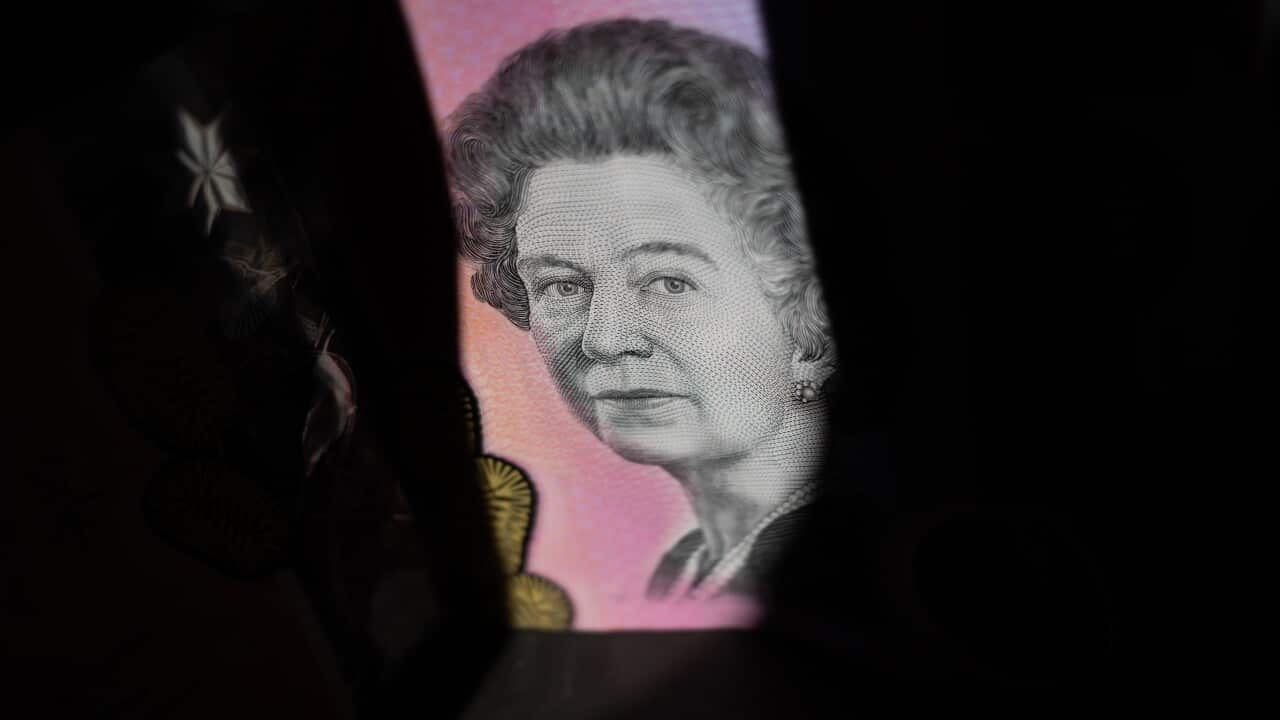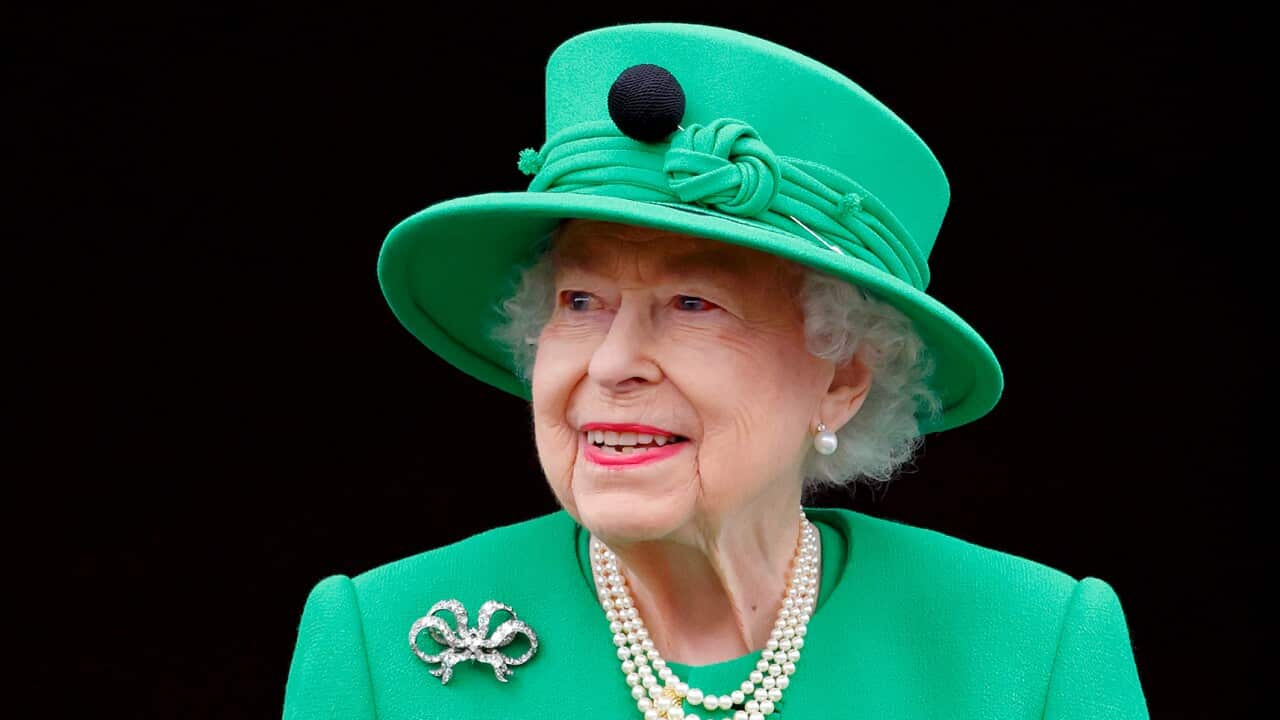The face of Australia's $5 notes and coins is about to change. Here's how
- An image of King Charles III will replace the photograph of Queen Elizabeth II on Australia's $5 banknotes.
- But Reserve Bank of Australia said it may take a few years for the new notes to comes into circulation.
An image of King Charles III will replace Queen Elizabeth II on Australia's $5 banknotes, the Reserve Bank of Australia (RBA) has confirmed.
"The reigning monarch has traditionally appeared on the lowest denomination of Australian banknotes. We will plan for an update to the $5 banknote design in due course," an RBA spokesperson said in a statement to SBS News on Friday afternoon.
But Australians may have to wait for a number of years before the new notes with King Charles come into existence.
"Creating the design for new banknotes is a complex process," the RBA spokesperson said.
"It can be several years when a banknote is printed and when it is issued into circulation depending on demand from the public and the need to replace banknotes that have become worn in circulation."
Australians can continue to use the current $5 notes, the RBA confirmed.
"All existing $5 banknotes can continue to be used," the spokesperson said.
Australian coins of the future are also likely to feature the head of King Charles, facing the opposite way to his late mother's.
A west-facing King Charles III would continue a royal tradition, said to have started under Charles II from 1660, where the new monarch faces the opposite direction to their predecessor in their profile portrait on coins.
Since her coronation in 1953, six likenesses of Queen Elizabeth II have appeared on the obverse side of Australian coins, the last of them struck in 2018 and all facing right.
The only exception to the "about face" convention was the coinage of Edward VIII, who insisted on his profile facing left.
"It is not clear whether this was an expression of rebellion against convention, or vanity, to show what he regarded as his better profile, containing his hair parting," John Richardson of Britain's Open University said.
"It was nevertheless determined that designs for the coinage of George VI, his successor, should be prepared as if that of Edward VIII had ... depicted him facing right, thus reinstating the original tradition."
Just like the $5 notes, Australian coins are also likely to be embossed with the face of King Charles.

Australian coins are produced by the Royal Australian Mint. Credit: Mark Nolan/Getty Images
While the Treasury did not confirm the coins will undergo the same change as the $5 notes, in a statement to SBS News, a spokesperson for the Treasury said the Royal Australian Mint and the Perth Mint have stopped their minting operations temporarily.
"Treasury can confirm that the Royal Australian Mint and the Perth Mint have temporarily paused minting operations today as a mark of respect," the Treasury spokesperson said.
"Treasury can confirm existing coins bearing the effigy of Queen Elizabeth II remain in circulation and remain legal tender,” the spokesperson said.
The Royal Australian Mint has produced more than 15 billion coins since being opened by the new monarch's late father, Prince Philip, in 1965.
The Queen made the transition to decimal currency in 1966, when she first graced the now-discontinued $1 paper note, and has long featured on the $5 note.
"All Australian banknotes issued from 1913 retain their legal tender status," the RBA spokeswoman said.
The RBA's latest suite of polymer notes — called the NGB (Next Generation of Banknotes) program — took 10 years and $37 million to complete, ending with the $100 bill in 2020.
The notes, mainly introduced to stymie counterfeiters, are printed in Melbourne by the RBA's wholly owned subsidiary Note Printing Australia, and undergo no fewer than 13 production processes.
New $5 notes featuring King Charles' head will also likely continue to bear some of the complex security traits of existing notes, including 3D and moving imagery, a tactile feature for the visually impaired, colour changes, micro-printed lines from the constitution and fluorescence under UV light.
Australia won't be the only nation in the Commonwealth facing the prospect of introducing new designs on its coins and notes.
Queen Elizabeth II has appeared on the currency of more than 30 countries, the first being Canada's $20 note in 1935, when she was only nine years old.
She is still likely to be in circulation somewhere, a century later, and well after her death which was announced on Friday at the age of 96.
Additional reporting by AAP.











